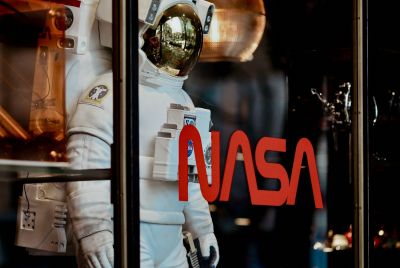Music lovers should thank music hater Thomas Edison for inventing the phonograph

KEY POINTS
- Edison's 'talking machine' was the first device to record and play back sound.
- The inventor didn't envision it as a tool for listening to music.
The next time you survive a claustrophobic commute thanks to a Spotify playlist or watch on misty-eyed as a couple take the first dance at their wedding, take a second to thank Thomas Edison who unveiled his phonograph 130 years ago today (21 November).
Dubbed the 'talking machine', Edison's invention was the first device to record and replay audio, proving that sound can be captured and played back.
It was a bit of a slow burner if measured by today's rapid pace of technological evolution, but by the 1890's, Emile Berliner's famous gramophone, which made the leap from cylinder to flat disc records, lead to the rise of the music industry as we know it today.
That is despite the fact that Edison hated most popular genres of music - once dismissing jazz as for "nuts". On top of that, he only entered the music industry after being cajoled by his backers, and found the sums of money involved with negotiating musicians' contracts objectionable, according to the New York Times. He accused artists of pretending to be inspired by the love of their art form, but in the end only valuing "money, and money only".
Edison was struck by the idea of recording the human voice as he and his assistants discussed using paper strips to document telegraph messages in 1877, Randall Stross, the author of The Wizard of Menlo Park: How Thomas Alva Edison Invented the Modern World, explained in Time.
He suggested to his staff that a needle was used to record the vibrations from the diaphragm used in telephones. He proposed the oscillations were transferred onto paper, and then drawn beneath a needle to send those same vibrations back into the diaphragm.
An hour or so later, they had cobbled together a device to record the words to nursery rhyme Mary Had A Little Lamb. They later swapped the medium for tin foil, and attached it to a mechanical arm.
A month or so later, Edison showcased his talking machine to the editors of the Scientific American magazine, where he had set it up to ask them "How do you do? How do you like the phonograph?"
While Edison dismissed his invention as a tool for documenting letters in offices, others recognised its potential.
The New York Times, for instance, predicted vinyl collections, suggesting that phonograph owners might one day have a "well-stocked oratorical cellar".
But for a decade, nothing much came of the device. Edison only revisited it after another inventor toyed with swapping the tin foil for a durable, wax-coated cylinder, prompting him to create the Perfected Phonograph.
And while it was largely useless as a dictaphone as he had imagined it, it was great for recording music. Hell-bent on being proven right that his machine was best used in workplaces, Edison was overtaken by other innovators. But by then the phonograph had already made him world famous.

















